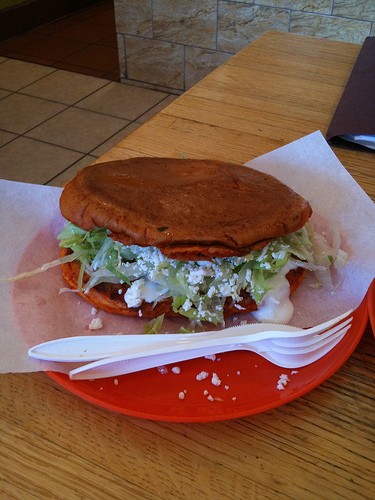
One of the foodie complaints about so-called “Mexican” restaurants in the United States is that the food on offer is not usually remotely like the food served in México. Mexicans at home don't eat burritos; they don't usually eat cheese all over everything; they eat vegetables. Tacos are a street snack, not a meal, and nachos are unheard of once you get about 50 km south of the border.
It's a shame, because there are a number of Mexican foods that ought to be better known in the U.S., foods that someone from Aguascalientes or Culiacán or Mérida would recognize. In trying to come up with today's post, I made a list of nearly twenty items really without thinking about it, but today we'll start with just five.
]
1. Tortas Ahogadas / Pambazos
Yes, a torta is just a
Mexican sandwich and a reasonably common order: beans, your choice of
meat, lettuce, tomatoes, chiles, sour cream on a bolillo roll (also
called a birote). What's less common and even more insanely delicious
are the two Central Mexican torta variations, the torta ahogada and the
pambazo.
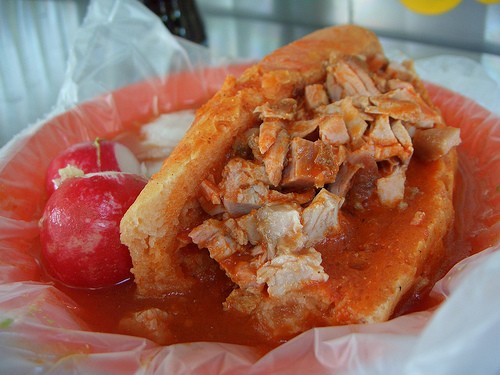
The torta ahogada is a tapatío
dish, meaning from Guadalajara, and is like a French dip on steroids.
It's a normal torta, which is either half-dipped in spicy árbol chile
sauce (media ahogada) or fully-dipped (bien ahogada). Don't order this
when you're wearing a white dress shirt.
The pambazo is technically comida chilanga,
from the area around México City, and is a similar dish, except that
the bread, which is tougher and chewier than normal birote, is dipped
in guajillo chile sauce first, then filled with your choice of filling
(potatoes and chorizo are a great option, for that starch-on-starch
love), griddled under a press and garnished with lettuce, sour cream
and cheese.
2. Mole de olla
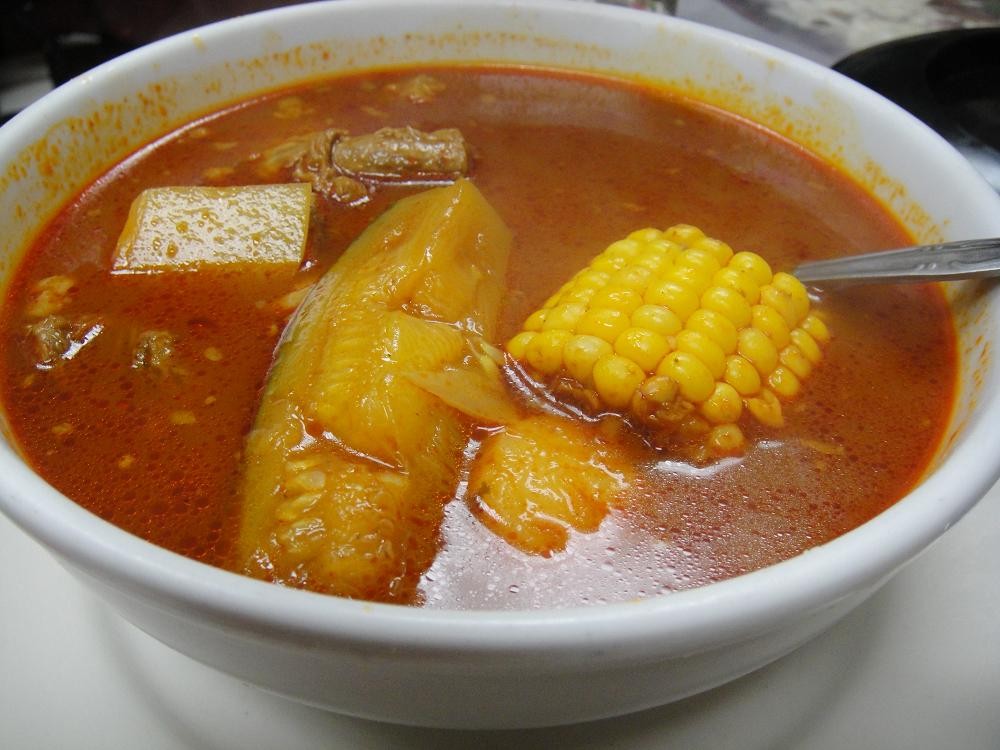
Mole
de olla has just about nothing to do with the famous Oaxacan and
Pueblan sauces, often containing bittersweet chocolate. Mole is
actually Náhuatl for “sauce”, and mole de olla means “sauce from the
pot”, which gives no clue as to what it is. It's Mexican stew, tough
cuts of either beef or pork slow-cooked until tender, with vegetables
in a thin gravy made from stock and chiles. There is nearly always corn
and potatoes in mole de olla, but the remaining vegetables may vary,
summer squash or chayote squash, green beans or even cabbage.
3. Alambre
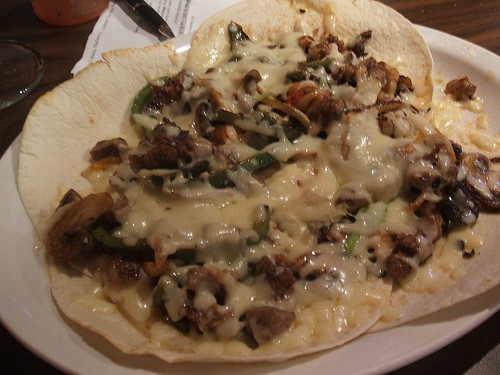
I'm
stunned that this doesn't grace more Mexican-American restaurant menus.
If ever there were a Mexican dish designed for today's American eating
habits, this chilango dish is it. There are a lot of other
dishes called alambre in México, mostly involving skewered meat, but
México City-style alambre is meat (often carne asada), ham, bacon,
peppers (often both bell peppers and fresh chiles) with quesillo
(string cheese) melted on top and served with tortillas. Gustavo
notwithstanding, how is it possible to go wrong with bacon?
4. Barbacoa
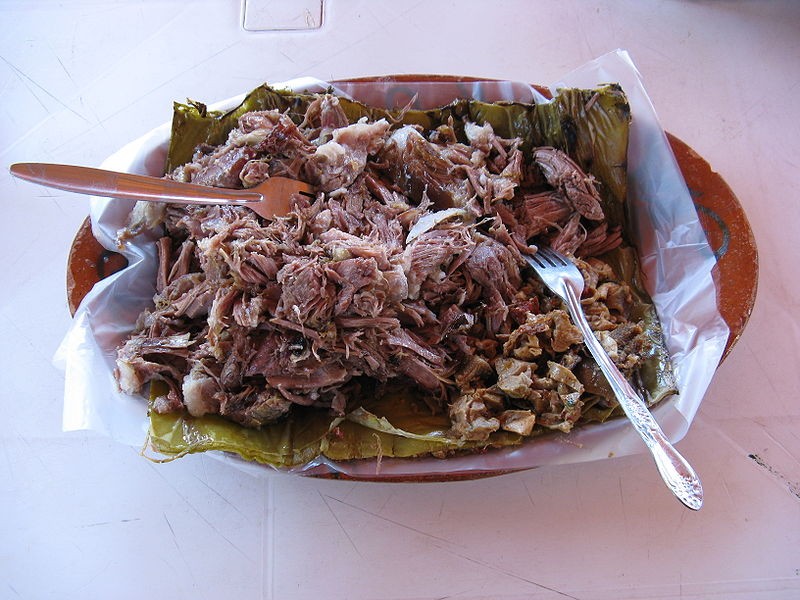
While
common in “real” Mexican eateries in this area, especially on weekends,
ask an Anglo what it is and you'll probably get something about
barbecue. Technically this is true, but barbacoa, the single best dish
to come from the state of Hidalgo in east-central México, is
pit-roasted lamb (barbacoa de borrego) or goat (barbacoa de chivo). It
cooks in its own juices, and the drippings are used to make a soup
called consomé (one M in Spanish, incidentally). The meat is meltingly
tender and is eaten with various salsas in tortillas, which can become
quite messy given how juicy these tacos are. The consomé is usually
served in small cups, often with whole garbanzo beans hiding at the
bottom. One bite of barbacoa and you'll wonder why it's hard to find
outside the Mexican border area.
5. Pescado zarandeado
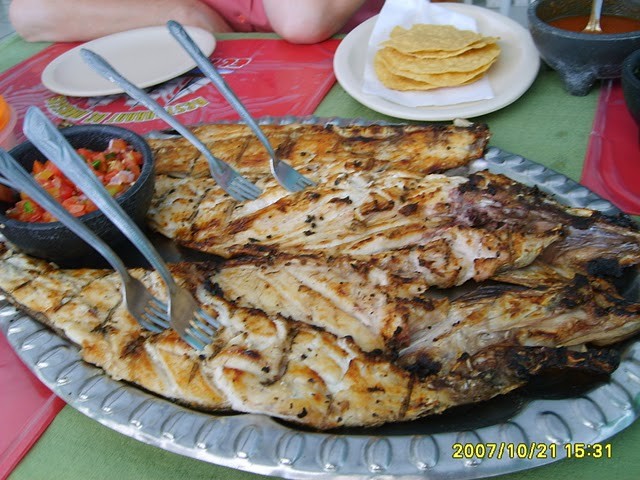
This
is the queen of fish dishes from the notoriously seafood-loving states
of Nayarit and Sinaloa, on the Gulf of California across from Baja
California. Translated, it means “jiggled fish”; it's actually a whole
fish (traditionally robalo, or Mexican snook) that has been split in
half, marinated in chiles, soy and Worcestershire sauces, put into a
wire cage and grilled over an open fire. The first taste is
unforgettable, with sweet flesh with a slightly salty, slightly spicy
marinade and a smoky overlay from the wood fire. When you order one,
don't be squeamish: dig around in the cheeks and around the backbone
for the best, sweetest, most tender pieces of fish.

